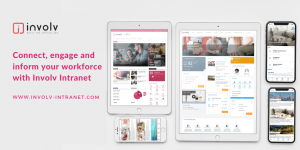Teamwork makes the dream work. Anyone who ever has worked in a team that clicks knows it’s true. By working together effectively, you and your team achieve more.
In fact, teamwork or team collaboration is an essential component in every high-performing team. One study (which examined over more than a thousand companies) found that companies that promoted collaborative working were 5 times as likely to be high performing.
However, while most organizations realize the great benefits of teamwork for the organization’s success, there isn’t much action to build a culture of collaboration.
Why does team collaboration fail in the workplace?
A good collaboration starts with trust. And trust is built through open and honest communication.
In collaborative cultures, leaders freely share news and information whether it’s good or bad. And employees are well informed of what’s happing at work, especially important issues and updates. They’re motivated to speak out their voice and share feedback to managers and one another.
Conversely, when employees fail to effectively collaborate, it’s usually the consequence of issues relating to communication and trust. Companies with poor communication often struggle with team collaboration too. How is the team collaboration optimized when there are confusion and a lack of understanding amongst employees?
Another major reason why team collaboration fails is the lack of the right tools and technology. In many organizations, employees struggle to work together as they aren’t supported with the necessary tools to connect, communicate and share ideas. It can be even harder when you have a distributed team.
3 best practices for cultivating a culture of collaboration
1. Build an environment of trust and transparency.
At its heart, cultivating a culture of collaboration means building an environment of trust and transparency. Naturally, people need to be able to trust one another before they can work together effectively.
And to build trust, transparency is key. Transparency in the workplace can be described as clear and honest communication.
It requires leaders to keep employees informed about everything happening at work, especially important issues and changes. And employees are comfortable sharing their opinions and feedback. They freely communicate and exchange ideas and thoughts openly and honestly.
86% of employees and executives cite lack of collaboration or ineffective communication for workplace failures.
Additionally, companies that have collaborative cultures encourage knowledge sharing and employee ideation. Employees are motivated to share their expertise and best practices so that everyone can learn from each other. That’s a great way to strengthen the relationship amongst employees too.
Planning your intranet project
Planning a new intranet project? What steps to take to build an effective intranet? Download our free whitepaper.
2. Provide the right tools to enable collaboration
70% of employees said digital technology improved collaboration (Aruba Networks). You can’t expect great collaboration amongst employees if you don’t provide them with the necessary tools.
Fortunately, today’s technology is making it easier than ever for employees to collaborate effectively, no matter where they work. There are a lot of collaboration tools and platforms that were invented to help people communicate and collaborate more efficiently.
One of the most effective tools organizations choose to invest in is the company intranet. Because it has been proved a powerful platform to connect team members, facilitate communication and improve collaboration. These are several ways organizations can leverage the company intranet for employee collaboration:
- Centralize all communication in one place. People can access all company news and updates easier and faster.
- Use as a shared platform for everyone to access files, co-edit documents and share them with colleagues in a secure way.
- Connects peoples by adding HR-features like the people directory that helps search and connect with any colleague at work, or people profiles that enable everyone to get to know their colleague better.
- Establishing a space for ideation and knowledge sharing (Involv intranet has an ideation feature to help employers effectively gather employees’ ideas)
- Automate processes and procedures (Involv perfectly integrates with Microsoft collaboration tools like Sharepoint, Teams, Yammer)
3. Recognize and value collaborative actions
To most employees, getting recognition is one of the greatest motivations to keep them engaged and committed to their work.
If you want to encourage people to collaborate more with each other, make sure you recognize and value collaborative actions when they happen.
Don’t wait until the performance review to share those recognitions. Good collaborative actions should be best acknowledged when they happen.
You can send a quick email, use the company intranet to share your employee’s good work, or publicly give praise in the team meeting. You will see a simple compliment can make a big difference.
Bottom line:
Realizing there are many positive impacts of a collaborative culture on employee productivity, creativity and satisfaction, more and more organizations across the globe now make collaboration a priority in their operations strategy.
To successfully cultivate a collaborative culture, organizations need to do more than simply telling people to collaborate more. If your company is looking to foster internal collaboration, make sure to include the best practices above in your action plan.
It can start with making your organization more transparent by centralizing all information in one place, which can be done with Involv. You can learn more about Involv here.

Tim Bogemans
Your Plan for Maximizing Employee Engagement
-
STEP 1. SCHEDULE YOUR DEMO
Get a demo and gain valuable insights in how the Involv intranet builds adoption.
-
STEP 2. CREATE A ROLLOUT PLAN
Together we co-create a rollout plan tailor made for your organization.
-
STEP 3. LAUNCH YOUR INTRANET
You’re all set to launch your intranet and get everybody involved.
-
STEP 4. ACHIEVE HIGH EMPLOYEE ENGAGEMENT
Use your Involv intranet to communicate effectively and engage employees.




